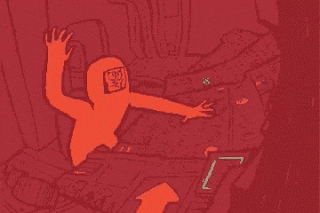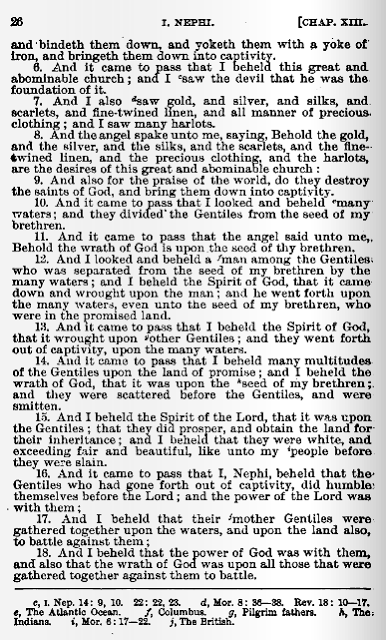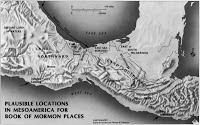Cognitive blindness
The climate change issue involves some complicated scientific issues, but it is largely driven by political considerations and funding. For the public, the narrative is controlled by the media, which has a strong filter in favor of anthropogenic climate change because of the political orientation of the reporters, editors, and owners. In the background, scientists disagree about the data, the methodology, the conclusions, and the policy implications. One non-scientist observer commented about it this way:
“The citizens who side with the majority of scientists in saying climate change is influenced by humans and the prediction models about doom are accurate have – as far as I can tell – never seen the strong versions of the argument on the other side. (I know because I ask about it.) They have only seen the weak versions presented by their own side. And the weak version of the argument goes like this: “The other side are science deniers and quacks.”
“My bottom-line belief about climate science is that non-scientists such as myself have no reliable way to evaluate any of this stuff. Our brains and experience are not up to the task. When I apply my tiny brain to sniffing out the truth about climate science I see rock-solid arguments on both sides of the debate.”
He coined a term for a “new cognitive phenomenon” that he identified:
“I’ll call it cognitive blindness, defined as the inability to see the strong form of the other side of a debate.
“The setup for cognitive blindness looks like this:
“1. An issue has the public divided into two sides.
“2. You read an article that agrees with your side and provides solid evidence to support it. That article mentions the argument on the other side in summary form but dismisses it as unworthy of consideration.
“3. You remember (falsely) having seen both sides of the argument. What you really saw was one side of the argument plus a misleading summary of the other side.
“4. When someone sends you links to better arguments on the other side you skip them because you think you already know what they will say, and you assume it must be nonsense. For all practical purposes you are blind to the other argument. It isn’t that you disagree with the strong form of the argument on the other side so much as you don’t know it exists no matter how many times it is put right in front of you.”
______________________________
I see cognitive blindness in all kinds of disputes. (In fact, it may be the basis for most legal disputes, apart from those in which people just want something they don’t have.)
In the Book of Mormon geography realm, cognitive blindness is pervasive. In fact, one of the reasons I got involved with this issue is I saw a pattern of what I considered academic bullying that was misleading members of the Church. This blog started as my notes on that activity.
I’m not rehashing that here, but I want to address the question of cognitive blindness from my own perspective.
Here is how I apply the four setup points above.
1. The Book of Mormon geography issue has members divided into two sides: (A) those who believe Cumorah is in New York and (B) those who believe Cumorah is not in New York.
Both groups have subcategories. Group A includes people who think the scope of Book of Mormon geography can range anywhere from New York State alone to the entire Western hemisphere. Group B is the two-Cumorahs group that includes people who think the scope of Book of Mormon geography is limited to a specific area, such as Baja California, Mesoamerica, Panama, Colombia, Peru, Chile, Eritrea, Malaysia, etc. (Lately I’ve been calling this group Cumorah deniers to keep the basic distinction clear without getting into the variety of non-New York Cumorahs. I figure that’s a fair designation because they are actually insisting that the New York Cumorah was a false tradition started by, or at least promulgated by, Joseph Smith himself. That makes them deniers IMO.).
2. The LDS academic literature includes untold books and articles that establish, support, defend, and promote the two-Cumorahs theory, primarily focused on the Mesoamerican setting. You see these from all the mainstream LDS publishers, including Deseret Book, BYU Studies, Neal A. Maxwell Institute (which absorbed FARMS), as well as what I consider ideological publications from the Interpreter, FairMormon, BMAF, Book of Mormon Central, and the rest. All of these refuse to publish material that supports the New York Cumorah and the geography theories based on that setting. To the extent they mention the New York Cumorah, they do so “in summary form and dismiss it as unworthy of consideration.”
3. People on all sides of the geography question do tend to remember having seen both sides of the argument, but you don’t have to probe much to realize they have really seen “one side of the argument plus a misleading summary of the other side.”
4. The last point is directly on point exactly as it is written above.
_____________________
The question I ask myself is, do I have cognitive blindness about the two-Cumorahs theory?
I have to consider the possibility, of course. Here’s how I analyze the situation.
For decades, since I was a seminary student in Europe, I learned, studied, and accepted the Mesoamerican setting. Like every missionary since at least the 1960s, I actually taught it on my mission. Like it or not, if you are using the missionary or foreign-language editions of the Book of Mormon, you are teaching the two-Cumorahs theory because of the illustrations in the book.
(And if you take someone to the North Visitors Center on Temple Square, you will be explicitly teaching them the two-Cumorahs theory.)
As missionaries, we presented lots of media about Central America that fit with what we thought was the Church’s position, based on the Arnold Friberg paintings (and now the ubiquitous John Scott painting). I went the extra mile and bought a French book on the Mayans. I read all the FARMS materials. On many occasions, I made the Mesoamerican arguments, based on what LDS scholars were saying and writing. I could still make those arguments today.
I suspect I know a bit more about the Mesoamerican theory than most members of the Church, and not only because I’ve read so much and attended so many seminars. Thanks to an archaeologist friend, I informally participated in the original peer review of John Sorenson’s 1985 book An Ancient American Setting for the Book of Mormon. I’ve visited many of the sites in Central America. I was all in for many years.
But then, as I said, I became aware of the academic bullying. I started reading some non-mainstream publications that discussed the North American setting. Eventually, I decided to do a deep dive and discovered the things I’ve written about in my books and blogs.
IMO, the Mesoamerican theory is based on a mistake in Church history, is perpetuated because of Mesomania, and is fundamentally destructive to faith because it teaches that Joseph Smith and Oliver Cowdery were ignorant speculators who misled the Church, as has every prophet and apostle since who has spoken about Cumorah in New York.
Actually, I don’t know of an idea that is more destructive to faith than the two-Cumorahs theory.
And it’s all the worse because LDS scholars and educators have mainstreamed it into LDS culture.
I regret falling for it for so many years and actually teaching it myself. One reason I write and speak about these issues now is to make up for that. I’m encouraged that so many people have been reading Letter VII and seeing how pervasive the two-Cumorahs theory has become.
Hopefully in the near future the Mesoamerican theory will be nothing more than a footnote in Church history.
_________________________
Some Mesoamerican proponents think I don’t know much about their positions or the facts about Mesoamerican culture and history. Certainly, there’s always more to learn. And, in many cases, I’ve used shorthand versions of the Mesoamerican theory (e.g., tapirs for horses) to explain the background of the two main perspectives about Book of Mormon geography.
The risk of cognitive blindness can never be completely eliminated. The best we can do is expose ourselves to both sides of a debate or controversy before making a decision. We want to keep our minds as open as possible.
That said, when you see the monolithic approach taken by the LDS academic and publishing community, you can be sure–absolutely sure–that cognitive blindness prevails on that side.
__________________________
The best cure for cognitive blindness is fair and open presentation of multiple points of view.
Let the readers and listeners decide for themselves, based on the best available information.
To that end, I published an “Agree and Agree-to-Disagree” list back in August. Here’s the link:
http://bookofmormonconsensus.blogspot.com/2016/08/agree-and-agree-to-disagree-lists.html
So far as I know, this is the only comparison that fairly represents both sides of the question. Readers can go through the points and decide whether they agree or disagree with each point. It’s a decision tree.
I could add more to it. I’ve asked for input from all sides to correct any errors or omissions. The version in an upcoming book is more detailed. But at least it’s a place to start if you want to measure your cognitive blindness.
__________________________
The other thing in the works is an in-depth analysis of the “correspondences” used by Mesoamerican advocates to support their position. I’ve called these illusory because they are common to many, if not most, human societies; i.e., the fact that both Nephites and Mayans farmed does not mean they were one and the same people.
This is a serious academic inquiry, but it’s no fun being serious all the time, so I posted a parody of this reasoning titled Moses Was a Mayan here.
Source: Book of Mormon Wars














